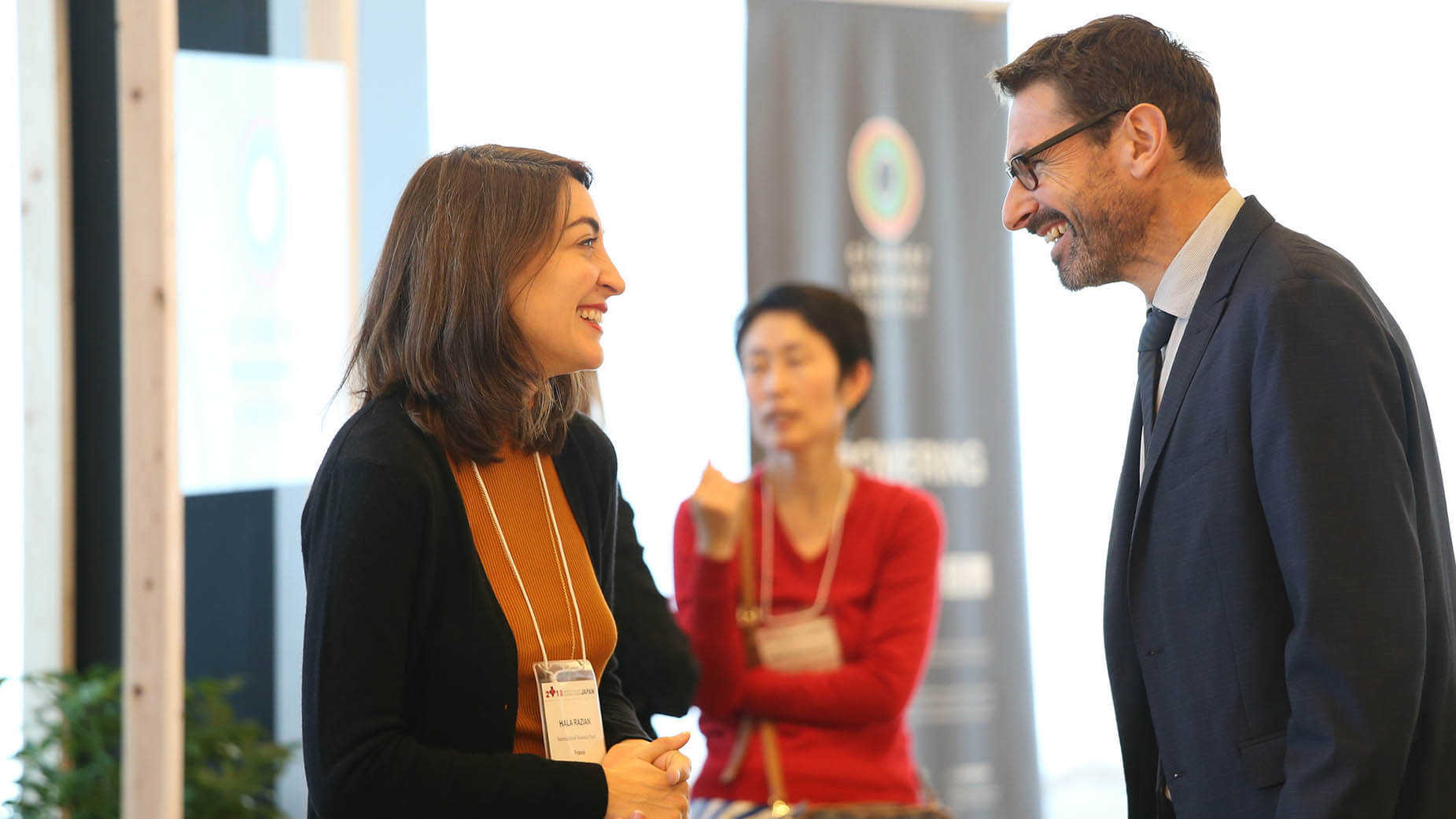Dark beige at the bottom, light beige on the sides and the same at the top. On the third floor of the Pacifico Yokohama conference centre, one has to deliberately stop and examine the floors, the walls and the ceiling for any hints that might reveal the centre is in Japan.
The badges hanging in the participants’ necks reveal that this meeting is a global one: a tall and thin man’s card says Ghana, the lady walking over there is from Brazil and the next group is led by a Canadian. The list of countries is long: Russia, India, the Netherlands, Indonesia, to mention just a few of the total of about 80 countries that the participants have come from. Of course, you also come across a large number of Asians in tidy suits, so the colours of the walls are not the only indication of the location.
In 2017, the first World Circular Economy Forum (WCEF) event created by Sitra was organised in Helsinki, Finland and got the attention of the world’s economy reformers. Now the second WCEF brought more than 1,100 participants to Yokohama in Japan to create a vision of the year 2050 and solutions for how the world economy can be harnessed to mitigate the most important crises of our time – climate change and the loss of biodiversity.
Speaking to the audience in the opening ceremony, Japan’s Minister of the Environment Yoshaki Harada brought a strong message that Japan intended to move towards a circular economy on a broad societal front.
“Decoupling economic growth and the overconsumption of natural resources is taken seriously in this county; that was clear to everyone,” said Harri Jaskari, a Finnish MP. He is one of the four members of the Finnish Parliament’s Friendship group with Japan participating in the event.
“What is crucial [in the promotion of a circular economy] is what kind of framework is provided by legislation,” Jaskari said, praising the active attitude of the Japanese.
Hopes raised in corridor conversations
The active attitude of the Japanese has not gone unnoticed by Vera Eremina from Moscow, who has stopped by a long, curved outside window of the conference centre to check her emails and to have a glance at the landscape saturated with shiny white high-rise buildings, parks, railways and motorways opening behind the glass wall. In the distance around the corner, you can see the snow-capped Mount Fuji.
“Japan is an interesting market that gives a strong signal of future solutions. The growing market of these solutions is interesting,” says Eremina, who represents the company Brands Embassy that promotes co-operation between brands and businesses.
It is the solutions that are at the heart of WCEF – how do we move on to a world in which hoarding things for ourselves is not what we work for, Markus Terho, the leader of Sitra’s Sustainable everyday life project, reminded the participants when he opened the second day of the event. Whatever we do in our childhood, youth or as adults, our actions are currently targeted at “getting stuff”.
There was a common understanding in the audience of the conference that this lifelong goal had to change now as the planetary boundaries have been reached.
As Programme Director Lewis Akenji from the Institute for Global Environmental Strategies IGES said: “Today, the question is: to be or to own?”
When you overhear parts of the conversations people have in the corridors during WCEF2018, you cannot avoid wondering whether some of the current problems could have been avoided if the culture of owning were not so strong. This reflection is only interrupted by the uniformed guard when everyone steps out of the lift. He has been standing at attention, staring forward for hours. The guard nods politely and reflection can go on: for example, could we have avoided the problem of plastic in the oceans?
Recovering plastic from bodies of water and using it as raw material is the solution offered by Finnish Anssi Mikola on the road towards a circular economy. With the solutions of his company RiverRecycle.com, Mikola aims to stop plastic waste in the catchment areas in rivers before the waste enters the seas and oceans.
“This could be a business worth billions of euros,” Mikola shouted to us briefly after WCEF’s Japanese Kabuki show seasoned with modern features.
In Yokohama, he hoped to be able to meet representatives from countries in which the problem is tangible. Mio Kitayama from the Japan Iron and Steel Federation was also focusing on meeting new kinds of operators at the federation’s fair department.
“This is a truly special event. It is difficult for us to get our voice heard outside Japan, but here we have an opportunity to speak to people from across the world.”
Creating unexpected connections
Ernesto Hartikainen, Programme Manager of WCEF, had a big smile on his face at the end of the two days: “For example, today at lunch, there was an enthusiastic buzz of conversations between very different kinds of people – something you cannot always take for granted in Asia.”
Hartikainen found the event successful as one of WCEF’s objectives is to bring together the perspectives of politicians, representatives of businesses and administration, science, education and citizens.
“We also have a lot of people here who are not yet at the heart of the development of the circular economy,” he says. “Many of the Asian people in particular said they had come here to learn.”
Perhaps we will already find out at WCEF2019 in Helsinki or WCEF2020 in Canada how many of them will be introducing the top solutions.
Jyrki Katainen, Vice-President of European Commission, tells what kind of role the circular economy plays tackling the climate change and what is Europe’s role in the global circular economy.

















Recommended
Have some more.